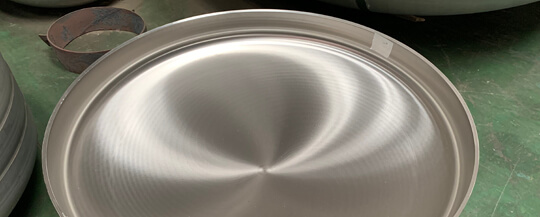The gap between the punch and the die is a key parameter in die design. During the stamping and forming process of the dish-shaped head, it directly affects the springback of the forming head, the amount of wall thickness reduction and the punching load of the punch. In the past mold design, the gap between the punch and the die is often obtained based on experience or traditional empirical formulas, which will consume a lot of resources and cannot achieve good results. With the help of finite element simulation software, a more accurate punch and die gap can be obtained.
In the simulation, the maximum blank holder force is set to 22000KN, the friction coefficient is 0.1, and the gap between the convex and concave molds is 10mm, 10.5mm, 11mm, 11.5mm, 12mm.
Influence of the gap between the convex and concave die on the forming load of the head
In order to analyze the influence of the punch and die gap on the stamping load of the head, the maximum forming load is taken as the research object, and the finite element software is used to extract the maximum forming load of the head under different blank holder forces.
The maximum forming load of the head decreases as the gap between the male and female molds increases. When the gap between the male and female molds is increased from 10mm to 11.5mm, the stamping load of the head is reduced from 2.92MN to 2.55MN, and the decrease is relatively rapid. When the gap between the male and female molds is increased from 11.5mm to 12.5mm, the stamping and forming load of the head is reduced from 2.55MN to 2.51MN, and the reduction is not very obvious. This is because when the convex-concave gap is small, it is difficult for the wrinkled sheet material of the flange part to enter the concave mold, and large flow resistance needs to be overcome. The punch provides forming force by acting on the large arc part of the dish-shaped head, which requires the punch to provide a greater forming force to pull the wrinkled sheet into the female mold. Therefore, the stamping forming load is relatively large. And in the punch and die gap
When it is larger, the wrinkled sheet material in the flange area can easily flow into the die, and the flow resistance that needs to be overcome is smaller, so the stamping load is lower. When the gap between the male and female molds is increased from 11.5mm to 12.5mm, the reduction of the head stamping forming load is not obvious. This is because although the gap between the male and female molds is large and the wrinkled sheet material in the flange area can flow into the female mold relatively easily, the flow of the sheet material still needs to overcome the larger forming resistance provided by the blank holder force. Therefore, as the gap between the male and female molds is further increased, the reduction of the stamping load of the head will not be obvious.
To sum up, although the gap between the male and female molds is too small, the rebound of the head will be reduced, but the wall thickness of the head is too large, and the stamping and forming load of the head is larger; the gap between the male and female molds is too large, although the wall thickness The amount of thinning can be controlled, and the stamping and forming load of the head will also be reduced, but the rebound of the head will increase. It is reasonable to take the gap between the convex and concave molds to 11mm.
